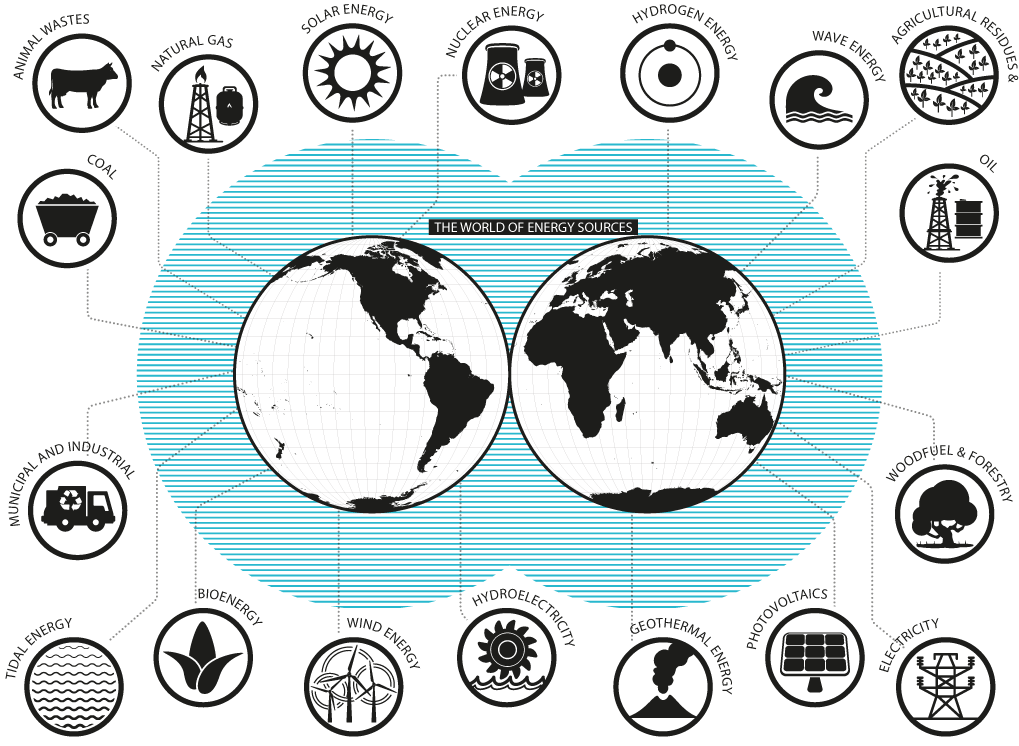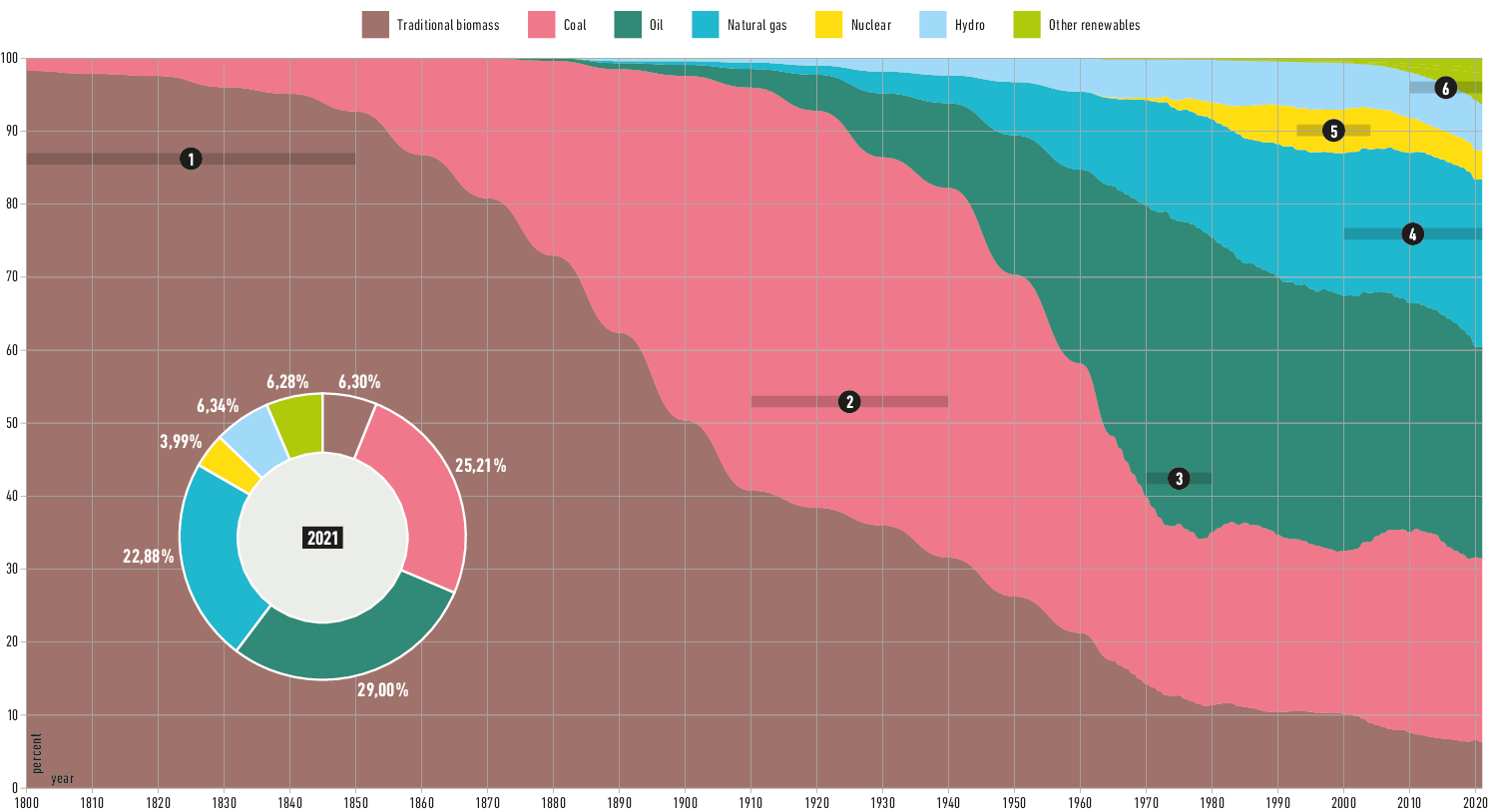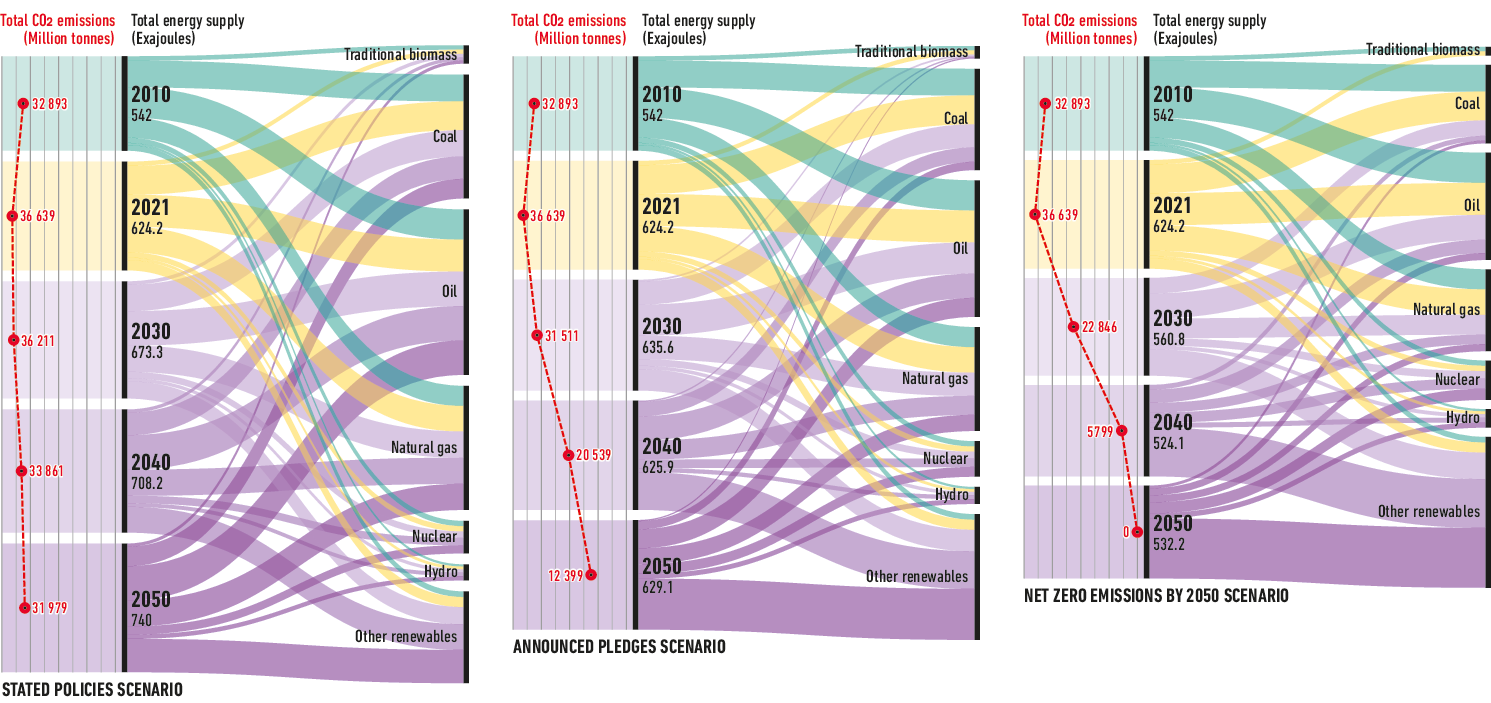Energy Sources

We define "energy sources" as all natural phenomena, raw materials and physicochemical processes by which humans can extract usable energy. An initial and simple classification distinguishes energy sources according to the original state in which they are found.
Primary energy sources are directly available in nature, thus not derived from the transformation of other forms of energy. Examples are fossil and mineral fuels (coal, oil, natural gas, uranium), and energy sources derived from virtually inexhaustible phenomena like the blowing wind, solar radiation, heat from the Earth and the dynamics of water.
Secondary energy sources are, on the other hand, forms of energy derived or resulting from more or less-consuming energy conversion processes. Examples are fuels (petrol, diesel, etc.) and thermoelectricity.
Energy sources can be further divided into two additional categories: conventional and non-conventional (or alternative). Conventional sources have been used for a long time (ex. coal, oil, natural gas, nuclear and hydro-energy) and enjoy extensive popularity, with a strong place in the energy market. Non-conventional (or alternative) sources are being used more recently (ex. solar, wind, tidal energy or bioenergy) and is in a phase of expansion, as is their strength in the energy market.
- BP, Statistical Review of World Energy 2022 via Our World in Data
- Vaclav Smil, Energy Tranistions: Global and National Perspectives (2017)
- IEA (International Energy Agency), World Energy Outlook 2022
The evolution of the mix of energy sources used in the world from the 19th century to the present.
Before the Industrial Revolution, energy use mainly relied on traditional biomass (especially firewood) for heating and cooking needs; the other needs were covered by human and animal muscle power, and a marginal contribution from water and wind (exploited through mills and sails). The First Industrial Revolution gave way to the rise of coal, which later declined after the 1930s and 40s in the face of the growing use of oil. In the second half of the 20th century, there was a considerable rise in the role of natural gas, later adding nuclear and renewable energies to the mix. Throughout this whole time, there has been a progressive reshaping of the traditional use of biomasses, thanks to the increase in access to modern and efficient energy sources.

How the global energy system could develop in the years leading up to 2050 according to the three scenarios presented in the World Energy Outlook 2022, released by the International Energy Agency.
The Stated Policies Scenario reflects current policy settings, based on a sector-by-sector assessment of what measures are actually in place or are under development by governments around the world.
The Announced Pledges Scenario assumes that all long‐term emissions and energy access targets announced by governments, including net zero commitments, will be met on time and in full, even where policies are not yet in place to deliver them.
The Net Zero Emissions by 2050 Scenario sets out a way for the global energy sector to achieve net zero CO2 emissions by 2050 (stabilising global average temperatures at 1.5 °C above pre-industrial levels), alongside universal access to modern energy by 2030.

Energy Sources








